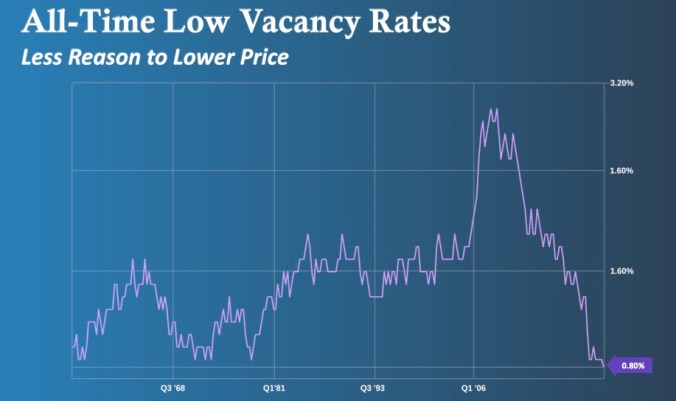As you probably know, the number one driver of economics is supply and demand…and it absolutely applies to today’s housing market.
Supply and demand is a true economic law. Just like gravity is a physical law, supply and demand is an economic certainty – and it isn’t just a theory. It’s truth.
With that in mind, supply and demand absolutely applies to real estate. The less supply, the more demand…and as you probably learned in your Econ 101 class, prices go up.
Understanding Housing Demand
The easiest way to understand the dynamics at play here is to take a look at the demand side first…and this is best shown by the number of new household formations.
Essentially, household formations are number of new households that will be formed at a particular time. They are based on projections of population by age cohort and age-specific headship rates.
Household formation is the underlying driver of long-term demand for new housing and thus new home construction.

As you can see in the chart above, there are 1.4 million new households being formed in 2022…and this number is a bit higher than average (the green line on the chart).
So, the market needs to account for these 1.4 million new households, either with rental properties or homes.
The Truth About Housing Supply
According to most reports, there are approximately 1.7 million new homes being built this year. It’s also important to take into account that approximately 100K homes are destroyed annually, that leaves 1.6 million new homes available for the 1.4 million new households (for a surplus of 200K homes).
This looks like good news! Well, let’s dive a little deeper…

As you can see by the chart above, there will only be 1.3 million homes actually completed this year (and that number seems to be shrinking every month due to labor and supply chain issues).
And when you factor the 100K destruction number in, the net result is new home supply of only 1.2 million, leaving a 200K shortfall.
Secondly, as you can see by the chart below, there is record low inventory in home here in the US. Only 1.03 million homes are available today.
Compare that to 2019 and 2020, where there was nearly TWICE the inventory.

You will notice that there are rises and dips each year…and the increase is due to the spring buying effect, where families want to make sure they’ve found a place by the start of school each year.
So, the fact that inventory is rising this year is completely normal and expected!
Finally, are there really 1 million homes listed for sale? Well, yes…but not exactly.

When you consider the number of homes under contract (meaning they are currently showing as available but truly aren’t), the number falls to only 400K available for sale.

As you can see, we are still at near record low inventory…only 33K off of the all-time low, set earlier this year.
Is There a Slowdown Coming?
Well, inventory levels appear to be coming up slightly (much of that having to do with the spring buying/selling season), but not overwhelmingly so.
There will still be a lack of supply for the foreseeable future. Sure, demand is being tempered a bit by higher interest rates, higher home prices, and stock market/economic instability.
However, there’s still plenty of activity to support price appreciation. Think about it for a second, people still need places to live…even if they need to pay a bit more to do it.
The meteoric rise in appreciation and home prices may slow (and we are already starting to see that in the price drops of listings), but because of the supply/demand curve, there’s no way that prices will actually depreciate.
We can see this in the number of actual home vacancies to support this.

As you can see, vacancies are at all-time lows – meaning that an increase in supply (because of 2nd home or investment property ownership) isn’t likely.
Take the housing crisis of 2008 for example…where nearly 3% of all properties were vacant – because folks were literally walking away from their investments because the carrying costs of homes became too much.
We are nowhere near that point in today’s environment – meaning that our market is quite strong and should stay healthy.
I hope you find this helpful…and don’t hesitate to contact me to discuss your current situation and how you might be able to take advantage of today’s changing market. It would be my pleasure to help you!





